Back On Solid Ground
The wind in El Chalten didn't appear any different from the day before, though the locals were saying today was better. But there was no point in waiting around. I loaded up on breakfast, once again merely bread and jam, and headed out - with the wind!
In less than three hours, I'd covered the 88 km leading out of El Chalten. It was now 11:00 AM. The plan was to stop only 20 km from here, but what if I could do another 120 km? If I could, I'd make it to El Calafate in only one day...
The problem was the route now turned south, putting me in a cross wind, and would head west, into the teeth of the wind, for the last 30 km. None of that sounded appealing, but I'd have to do it sometime. I might as well do it now!
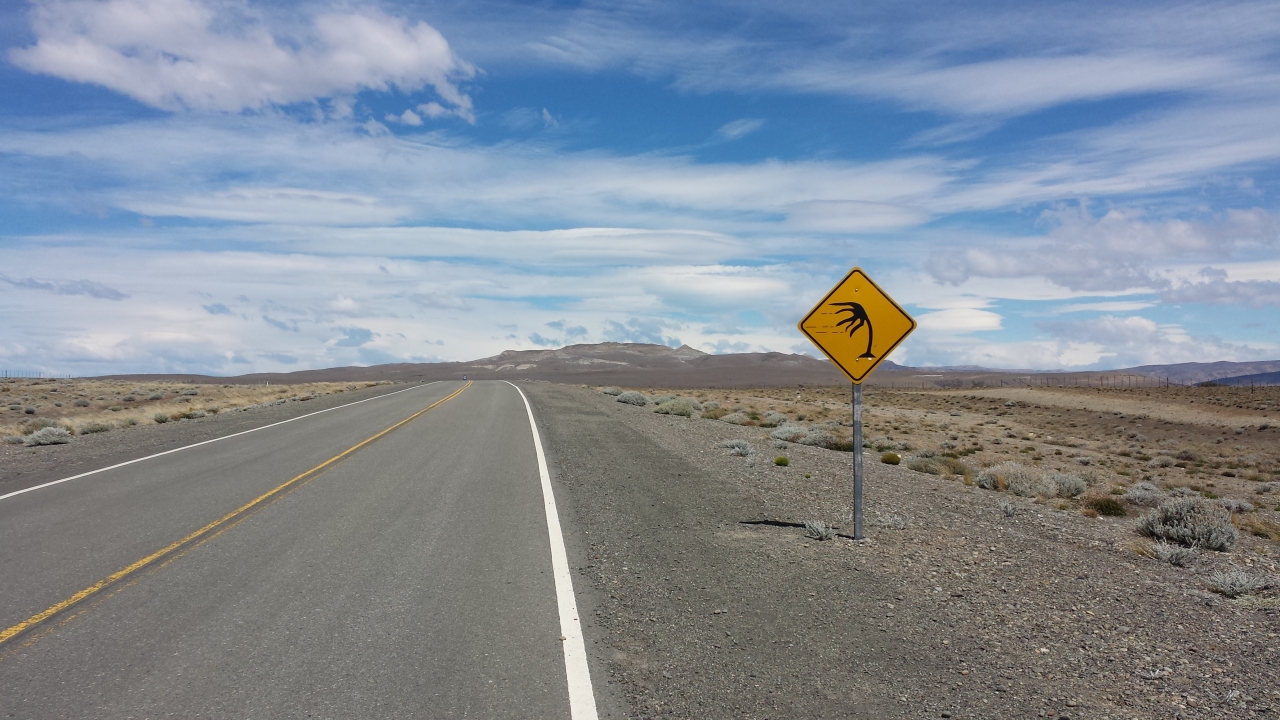
The wind appeared to shift slightly, now coming from the WNW instead of due west. Since I was going south, this was in my favor! That almost never happens. The road found its way SSW on occasion, and I ducked my head and powered through it, but enjoyed the boost when it turned SSE.
Later on, the wind shifted again, to come from the SW. Oh, that's not even cool, man...
The bottles of piss have returned to the side of the highway. Everywhere I look, former bottles of soda or water or orange juice, half-filled with an ever-darkening orange liquid. I guess it's only important to respect the pretty areas of your country?
10 km before I would make the turn west to Calafate, a car headed north stopped, rolled down the window, and waved me over.
"Do you need anything? Water, or do you want some cookies?"
"I like cookies..."
They smiled and handed me a package. Then they told me about a place in El Calafate where cyclists can stay for free. Good info!
The wind's shift might have been a blessing, as it didn't get any worse when I took the turn; it was ahead and from my right before, and now it was ahead and from my left. It wasn't fun, and 30 km in a little over three hours is pathetic, but I made it to El Calafate in one day! A full day ahead of schedule!
The first thing I did in town was make reservations to see the glacier. I'd been told at least half a dozen times that I have to see the glacier, and if not for that, I would've skipped El Calafate altogether, as those last 30 km were off the more direct route.
A bus ticket to the glacier, one hour away, cost $40. Ugh. The cost of operating a bus is obviously a lot less. A driver costs probably $100/day, and the gas is even less. Split that up among 50 passengers and no one should be paying more than $5. But they cost $40 because they know they can charge that much and still sell them. I understand that’s basic economics, but the more I experience such a thing, the more I hate it.
A lot of towns along the way have been described as touristy, but most of the time it only meant that there's one strip of town with good restaurants. This time, El Calafate felt really touristy. Little shops selling useless trinkets, lots of clothing stores with big windows out front, restaurants that put a lot of effort into their signs, and the place was absolutely teeming with pedestrians, most of which were well-dressed. When I walked past the shops and restaurants, I kept looking into them, thinking,"Oh, that looks cool, maybe I should get one," even though I'm fully aware of how useless all of those things would be. I hadn’t been exposed to advertising or marketing in a long time, so now my tolerance was down and the advertising has a stronger effect. It's either sad or scary, or both, that our decisions and perception can be manipulated so easily.
I found my way to La Cueva (the cave), the place that the local guy had told me about. I wasn't sure what to make of it at first, and later, I still wasn't sure what to make of it. From what I could tell, it used to be a house that burned down or something, and now there were other structures going up behind it.
There was a building at the back where people could sleep on mattresses laid out on the floor. There was a shed that served as the community kitchen. There was a bathroom, with a shower that was an overhead tank you fill with a hose. The water could be heated by plugging something in for about half an hour - much longer and the water gets too hot with no way to cool it down. You had to unplug the heater before getting in the shower or you could be electrocuted.
There were two guys there when I showed up, one who had been there for a month or so, and another from Spain, who was also on a bike tour. Eventually, over the course of the next two days, I would meet about 15 people, few of which spoke any English. From what I could tell, no one lived there or owned the place, though a few had stayed there for months. Who does own the place? And what is its purpose?
I took the bus to the glacier on my day off, and was surprised to learn that on top of the $40 bus ticket, you have to pay another $25 to enter the park where the bus takes you. $65 for the right to look at something. Not do something, look at something. And it's not like letting you look at a glacier costs anyone money.
OK, so the glacier was pretty cool.
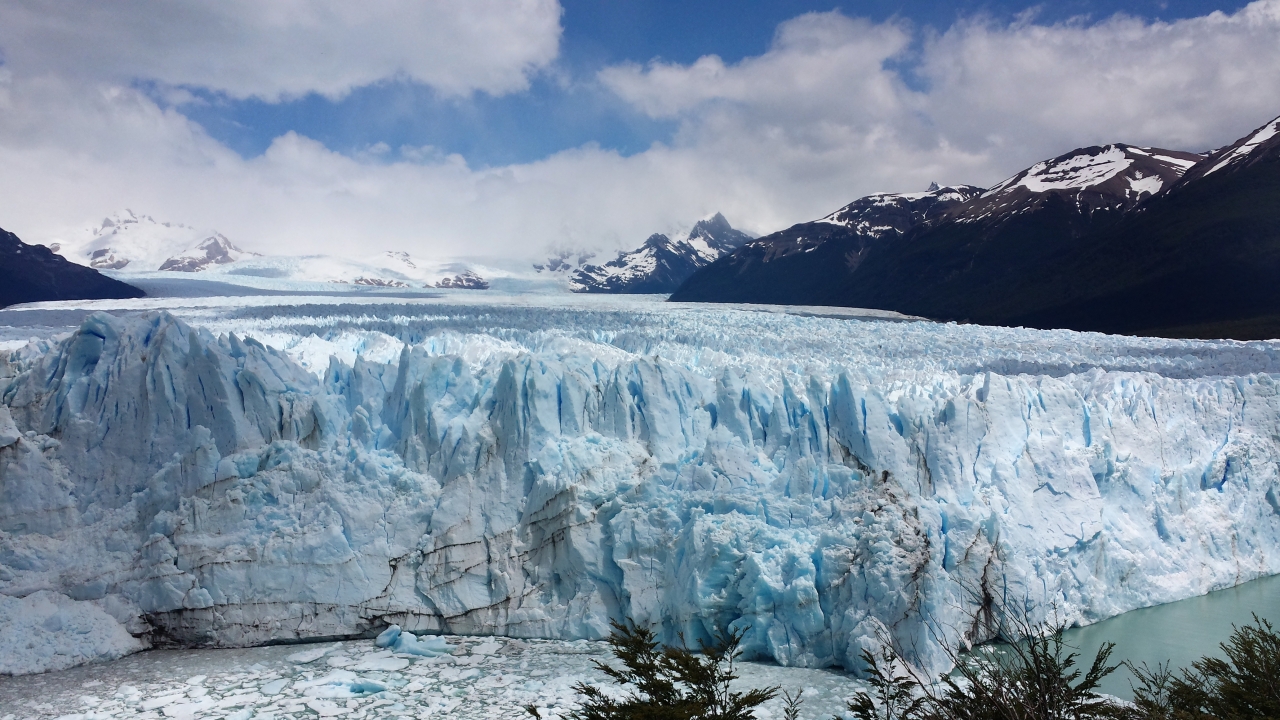
The Perito Moreno glacier is one of only two advancing glaciers in South America. Its front end is in a lake, and it pushes against the shore, damming one side of the lake from the other. This can cause one side of the lake to rise as much as 30 m above the other, at which point the pressure becomes too great and the glacier ruptures, breaking the dam and allowing the water to flow through.
The glacier, in places, is 100 m above the surface of the water, and extends just as far below the surface. it advances 2 m per day, lightning-fast for a glacier, and calves frequently.
I've seen a glacier before, but not an advancing and calving one. The sound it makes! I've never heard something exactly like it, and it's strange for ice to have what I would describe as a dry sound.
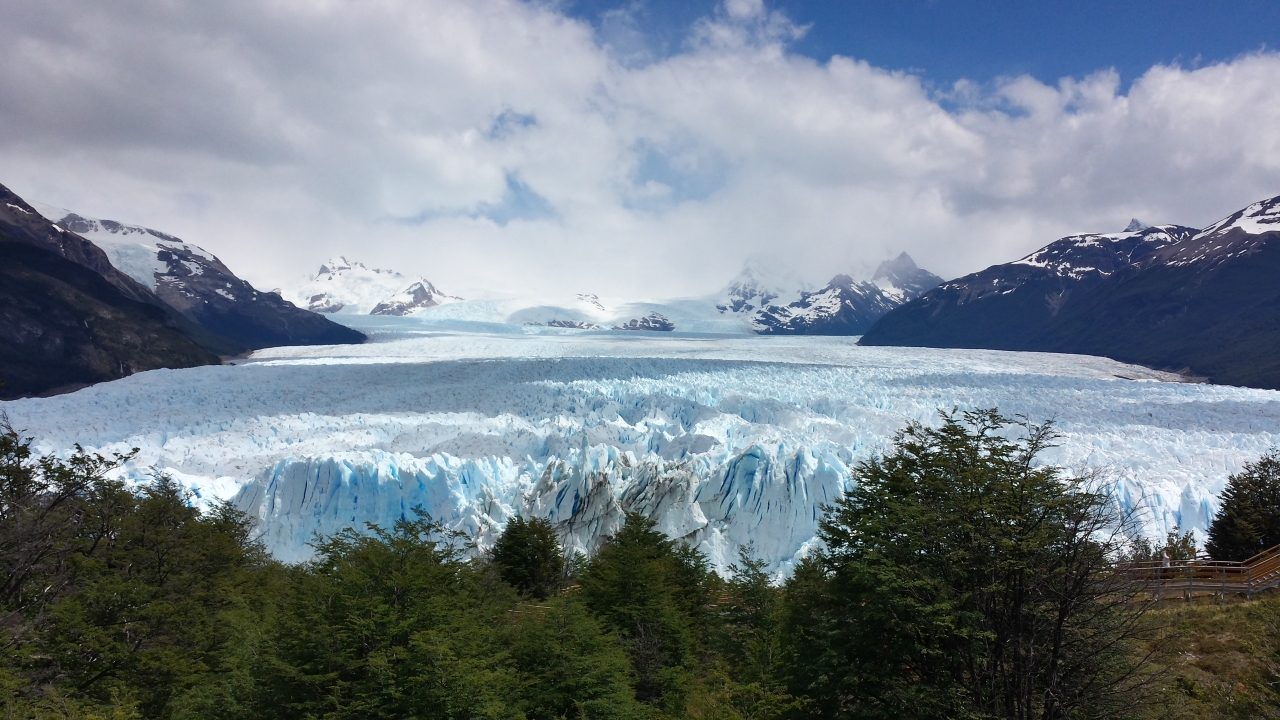
The park was set up with elevated walkways so you could walk from one end of the glacier's front face to the other, with plenty of viewing decks along the way. The bus dropped us off at 9:30 AM and wouldn't leave again until 2:30 PM, giving us lots of time. There were a lot of French speakers there. I wound up meeting a couple from Texas!
Once I got back to El Calafate, I found an internet cafe and spent a couple hours there trying to get some photos uploaded. The resulting charge was about $25. I could've stayed in a hostel with WiFi for that much, rather than staying at La Cueva and going somewhere else for internet access.
When I got back to La Cueva, a couple guys were heading out the door.
"Hey, do you want dinner? We're going to the butcher to buy meat and make barbecue. Beef, lamb, chorizo. $6 if you want in!"
Argentinians are famous for cooking good barbecue, and yeah, I was hungry. Why not? I paid up.
It was 6:00 PM when they left. They got back at 7:00 PM. They didn't start cooking until 10:00 PM. Goodness gracious, why?? We ate at 11:00 PM, two hours after I'm usually in bed. I mostly love Argentina, but extremely late dinner is one habit of theirs I'll be glad to leave behind.
But oh man, was it good! Every time I have cordero (barbecue lamb), I'm caught off-guard by how damn good it is! The beef still isn't up to Texas standards, but if I had a way of smoking anything, cordero is something I'd take home with me...
I woke up extra-early the next morning, despite not getting to bed until after midnight. I had an idea...
Rio Gallegos was 300 km away, but it was all flat, and more importantly, to the east. If the wind was as strong as it always is, that could be done in ten hours, possibly even less! Could I really do 300 km in one day? I thought it was possible, especially seeing how the sun doesn't go down until 10:00 PM. But an early start would certainly help.
Once I got out of town, I made a disappointing discovery: there was no wind! The one day I was heading east, the one day it would be directly behind me, the one day I could use it, and it's gone! I kept shouting at the air in frustration. It didn't seem fair.
After a few hours, I wound up having to do a long climb, about 10 km, none of it easy. It took about an hour. I had only done about 60 km, and it was already 11:00 AM. I resigned to only go to La Esperanza, halfway to Rio Gallegos. 300 km was worth a shot, but sometimes no matter how bad you want it, it doesn't work out. At the top of the hill, I met a bunch of Swiss and German folks on vacation. One of them lives in Ecuador, and they had rented a bus to drive all over South America together. Sounded like a cool trip!
But once I crested the hill, the wind kicked in. My pace went from a crawl to a gallop. I kept an eye on both the time and the distance markers on the highway, and every time I checked, I couldn't believe the pace I was holding. Was Rio Gallegos back on the table?
I arrived at La Esperanza at 1:45 PM. Rio Gallegos, you're on.
After effortlessly chewing up another 100 km or so, the highway turned to go due south, just as the sky clouded over and even dropped some rain on me. Yeah, crosswind, cold, and rain, that's exactly what I like. I managed to put up with it for 25 km, then followed the curve of the road back into the tailwind.
25 km from Rio Gallegos, it was only 7:00 PM. I was absolutely giddy. 300 km in one day! Another day ahead of schedule! Maybe I'd take a day off tomorrow, or maybe I'd get to spend an extra day relaxing in Ushuaia, but either way, I'd earned something!
A funny thing happened though: the wind stopped again. As easy as those first 275 km were, I'd still been on the bike for 13 hours at this point, and that had me tired. Now I had to earn these last 25 km. They seemed to go on forever.
But on my way to Rio Gallegos, I saw an uplifting sight: my first sign for Ushuaia! Or my second technically, since there had been one at the northern border of Argentina, I would say more as a joke than anything. I hadn't taken the most direct route, so the distance I've covered is probably even more than what was posted there.
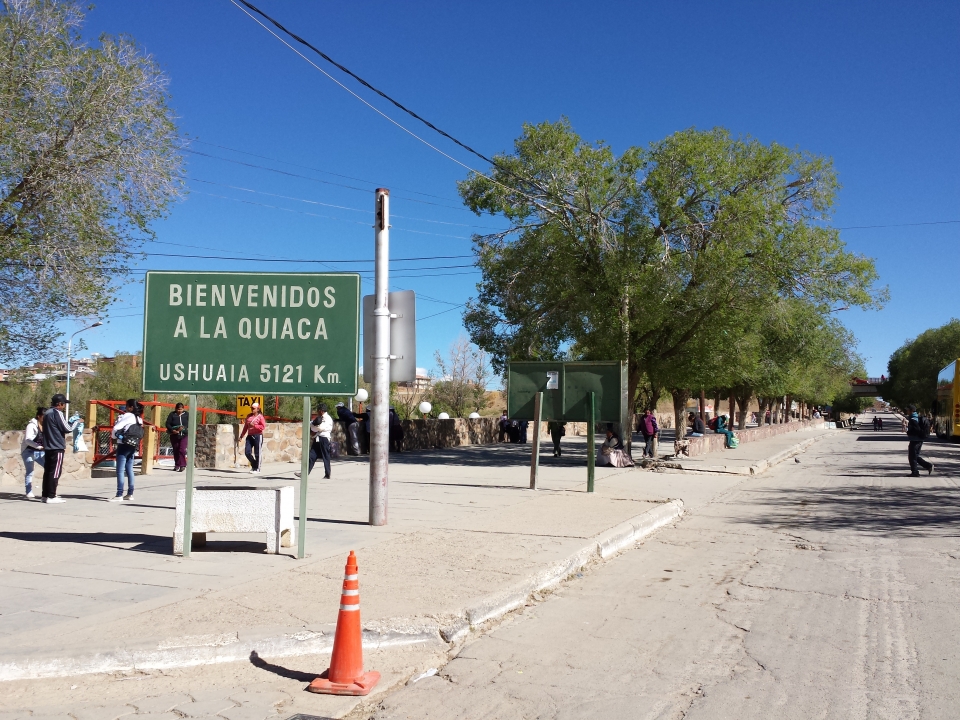
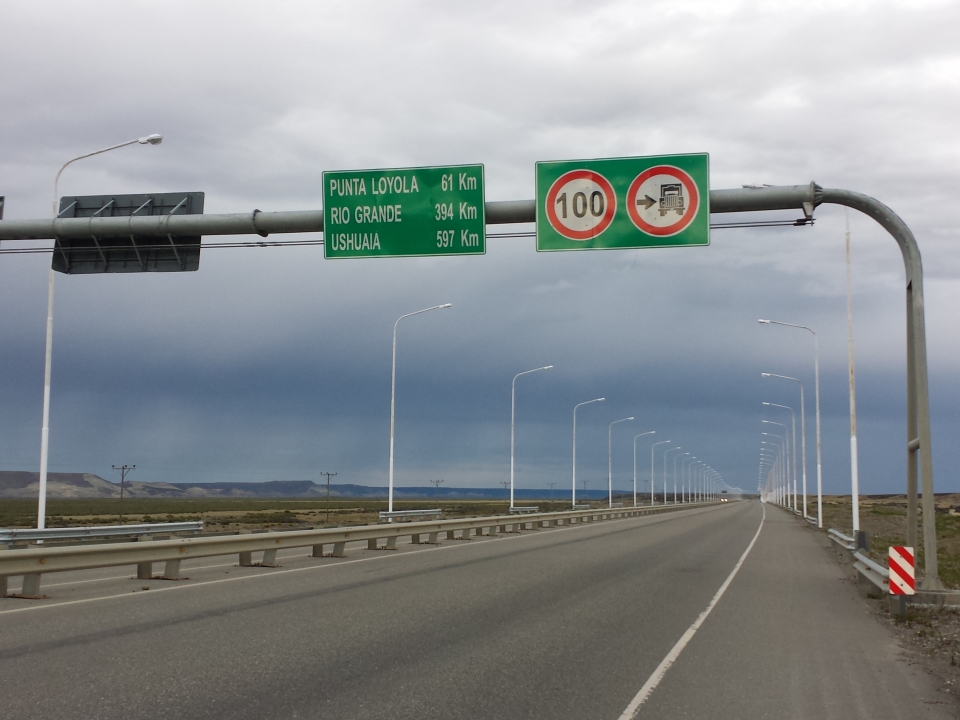
We've come a long way. And that's only since getting into Argentina, barely more than a month ago. To think back to Alaska, it's almost hard to fully comprehend the distance and time involved, and I lived it!
Rio Gallegos looked less like Argentina and more like the rest of Latin America. Stray dogs everywhere, piles of trash laying around. Honking drivers. Loud music blaring. My idea to possibly take a day off here was immediately dashed. I hoped the rest of the way south wasn't like this...
I made it to a cheap hotel with over an hour of daylight remaining and more or less went right to bed. Over 300 km, in about the same amount of time as it took to do 100 km on the Carretera Austral, and it felt easier, too. If that doesn't tell you that conditions matter more than distance, I don't know what does.
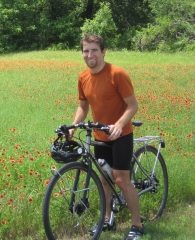


 June
June

